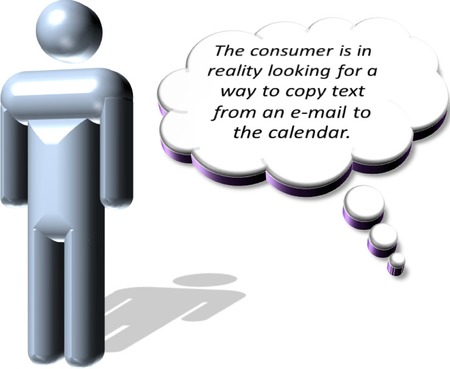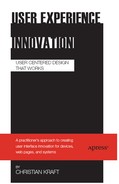Types of User Needs
I usually distinguish between three types of user needs: immediate user needs, perceived user needs, and latent user needs. These three types of user needs are briefly introduced next.
Immediate User Needs
Immediate user needs are the needs that users have here and now, and that most users can imagine and articulate. An example is, “I want this device to improve the safety of my family.” Another example might be, “I want a device to inflate my bicycle tire.”
Existing user needs also very much reflect user expectations. For example, a user visiting a site perceived as a social networking site might state, “I expect this web page to help me get in contact with my friends.”
Immediate user needs are important to fulfill—for example, when selling a product or when users have just entered a certain web page and they are considering whether to spend more time on that page. Immediate user needs are, however, often a bit transient. They can change easily and rapidly. A user's immediate need for Facebook, for example, might change from posting entertaining photos one day to sending a serious note to a relative in the hospital the next.
Perceived User Needs
Perceived user needs are different from immediate user needs. Perceived user needs refer to tasks that the users—falsely—expect your product to solve. Perceived user needs are often superficial and created by hype in the market, or by marketing campaigns that make users believe they have a need for a certain product when they truly don't. Marketing alone does not, however, ensure a successful user experience.
So be careful with these needs. They may set the user's expectations too high, which can ruin both the first impression of your product and the long-term user experience.
The term perceived value should not be mixed up with the term perceived user need. Perceived value is certainly something to aim for, since it reflects that the user actually does see a value (be it illogical or real). On the other hand, a perceived need is often a superficial user feeling, which can lead you down the wrong track when innovating for user experiences.
Anecdote
Latent User Needs
The term latent user needs covers in my definition both needs that the user already has but cannot imagine or articulate, and needs that the user may not even have yet. Latent needs can often be identified by observing the users of your product. Imagine that you are observing a user who is using your e-mail application, and you see him try to retype the content of the e-mail into a calendar reminder. The user may not be able to imagine easy solutions for moving the text over to the calendar, and hence he cannot express the need for a function to make that task easier. But you as the observer can easily identify the perceived need (see Figure 4-3).

Figure 4-3. Example of a latent user need
A latent need for parents might be a device or web page that allows them to see the exact location of their children (this may not, however, be a need for the children). But if the users can't imagine that this may actually be possible, it won't be expressed as a need.
Hydration packs represent an excellent example of a latent need translated into a successful product. Hikers, cyclists, skiers, and other outdoor enthusiasts have a need for water. Yet by and large, no one had been asking for a way to carry a bag of water on their back until the creators first saw the latent need, and then worked tirelessly to help others see it also. The result is that one hardly sees an outdoor sports enthusiast today who isn't carrying a bag of water.
A great visual or industrial design of your device or a surprising wow—function in your software package may also meet latent needs for beauty, joy, and surprise. If you, for example, buy a car and later realize that it can parallel-park automatically, you may be extremely satisfied with your car for covering a need that you would never have thought to express directly.
![]() Note Don't think that you can avoid worrying about latent needs when designing tools that people are required to use in their work. The doctor who buys an iPhone will soon come to demand similar usability and joy from the products used in his medical practice.
Note Don't think that you can avoid worrying about latent needs when designing tools that people are required to use in their work. The doctor who buys an iPhone will soon come to demand similar usability and joy from the products used in his medical practice.
Latent needs will almost never be expressed by the user (except maybe for a few lead users; see chapter 13), and can hence only be captured by observers who specifically look for them. Observers such as user experience experts hence must develop skill in detecting underlying needs during interviews, observation, and sometimes even usability tests.
Latent needs are crucial for user experience innovation, since they can often put you one step ahead of competition. Using feedback from customers is becoming quite common, but often that feedback is mainly used to fix pain points, as described in Chapter 9. Trying to look ahead—or into the underlying latent needs of customers—is still not common, and doing so may thus give you a competitive edge in your current market situation.
Remember that growth in almost all consumer-oriented industries does not come from lowering the cost of your products, but from creating great experiences when your users are using your products. A great user experience can create a tremendous value in a product. In today's economy, cost is certainly still important, but if you provide the user with a great experience (e.g., feeling), you can charge almost anything for your product.
Anecdote
Interview your users. Observe them. Carefully consider their actions and whether any of those actions represent latent needs that can be addressed by creative solutions in and surrounding your products. Several of the user experience innovation methods in the remainder of this book will give concrete guidance on how to innovate for latent user needs.

